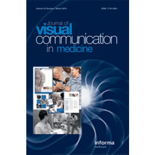
Journal of Visual Communication in Medicine
metrics 2024
Bridging Art and Health for Enhanced Communication
Introduction
The Journal of Visual Communication in Medicine, published by TAYLOR & FRANCIS LTD, stands as a pivotal platform in the interdisciplinary exploration of visual communication within the medical field. With its origins dating back to 1978 and a convergence set to reach 2024, this journal not only boasts an impressive impact factor but also occupies prominent positions in the Scopus ranking, with Q2 classification in Health Professions and Q1 in Visual Arts and Performing Arts. Situated in the United Kingdom, the journal embraces rigorous peer-reviewed research and innovative practices that bridge art and health communication, thus serving as an essential resource for researchers, healthcare professionals, and students eager to enhance their understanding of visual methodologies. Although it does not currently offer Open Access, its rich content and scholarly contributions deeply influence practices and policies across related disciplines. As a thought leader in its field, the journal encourages the advancement of knowledge and fosters dialogue among professionals committed to improving health communication through visual means.
Metrics 2024
 0.25
0.25 1.00
1.00 1.10
1.10 19
19Metrics History
Rank 2024
Scopus
IF (Web Of Science)
JCI (Web Of Science)
Quartile History
Similar Journals
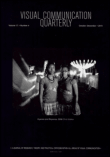
Visual Communication Quarterly
Innovating Perspectives on Visual PracticesVisual Communication Quarterly, published by Routledge Journals, Taylor & Francis Ltd, is a leading academic journal dedicated to the study and exploration of visual communication in various contexts. Established in 1994, this journal has established itself as a significant source of knowledge within the fields of communication and education, as evidenced by its ranking in the Q2 and Q3 quartiles respectively in 2023. Although it does not currently offer open access, it continues to present cutting-edge research which reflects contemporary visual communication practices and theories. With an ISSN of 1555-1393 and E-ISSN 1555-1407, Visual Communication Quarterly serves as an essential platform for academics, professionals, and students who seek to advance their understanding of how visual media shape public discourse, identity, and educational practices. With a convergence of scholarship anticipated until 2024, this journal promises to remain relevant and influential in the ever-evolving landscape of visual communication.

Universitas Medica
Exploring the frontiers of medical science and practice.Universitas Medica is a prominent journal dedicated to advancing the field of medical sciences, published by the Pontificia Universidad Javeriana, Facultad de Medicina. Since its transition to an Open Access format in 2010, it has played a pivotal role in promoting the dissemination of high-quality medical research. Featuring a diverse array of studies encompassing clinical practice, public health, and medical education, Universitas Medica aims to provide researchers, healthcare professionals, and students with invaluable insights and the latest findings in medicine. With a focus on enhancing accessibility and fostering collaboration across the medical community, this journal stands out as a critical resource for those looking to stay abreast of innovations and trends. The journal is indexed under ISSN 0041-9095 and E-ISSN 2011-0839 and operates from its base in Bogotá, Colombia, contributing significantly to the scientific landscape both regionally and internationally.

Visual Ethnography
Unlocking the Power of Visual Narratives in AnthropologyVisual Ethnography, published by UNIV BASILICATA, is an innovative academic journal dedicated to the interdisciplinary exploration of visual methodologies within the realms of Anthropology, Communication, and Cultural Studies. With a notable emphasis on visual ethnographic practices, this journal serves as an essential platform for researchers, professionals, and students aiming to bridge the gap between visual representation and cultural analysis. Since its inception in 2012, Visual Ethnography has contributed significantly to the academic discourse, despite its current positioning in the lower quartiles of its field as evidenced by its Scopus rankings. The journal actively engages its audience by providing open access options, ensuring that scholarship in visual culture is available to a wider community. With the academic landscape continually evolving, Visual Ethnography remains a vital resource for those seeking to understand the complexities of culture through a visual lens in the context of today’s globalized society.
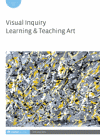
Visual Inquiry-Learning & Teaching Art
Cultivating Artistic Minds Through Inquiry-Based LearningVisual Inquiry: Learning & Teaching Art is a premier journal published by Intellect Ltd, dedicated to exploring innovative methods and practices in art education. With its ISSN 2045-5879 and E-ISSN 2045-5887, the journal provides a vital platform for researchers, educators, and practitioners to share their findings and insights into the pedagogy of visual arts. Although currently not open access, its influence in the field of art education is underscored by the quality of contributions from both established and emerging scholars. As the dialogue surrounding visual literacy and creative methodologies evolves, this journal remains essential for those invested in improving teaching strategies and fostering artistic expression. Its commitment to advancing knowledge in art education makes it a critical resource for anyone looking to enhance their understanding of how art can effectively be taught and learned.

Advances in Simulation
Empowering Innovation Through Simulation InsightsAdvances in Simulation is a premier open-access journal published by Springer Nature since 2015, designed to disseminate cutting-edge research and advancements within the realms of simulation across diverse fields. With a focus on areas such as cognitive and developmental neuroscience, ecology, and psychology, this journal is uniquely positioned at the intersection of various disciplines, as evidenced by its impressive 2023 quartile rankings, which range from Q1 in Ecology, Evolution, Behavior and Systematics to Q2 in Psychiatry and Mental Health. Hailing from the United Kingdom, and supporting an open-access model, Advances in Simulation not only promotes the visibility and accessibility of vital research but also engages a global audience of researchers, professionals, and students. Its significant impact factor underscores its importance in the academic community, making it a vital resource for those interested in the synthesis and advancement of simulation techniques across multiple domains.
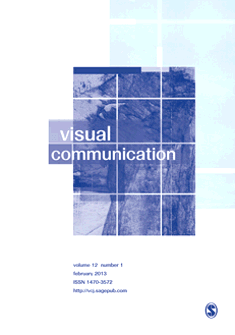
Visual Communication
Illuminating the Power of Visual Culture.Visual Communication, published by SAGE Publications Inc, is a leading journal in the fields of Communication and Visual Arts and Performing Arts, recognized for its significant contribution to theoretical advancements and empirical research. With an impressive impact factor and ranked in the Q2 quartile for Communication and Q1 for Visual Arts and Performing Arts, this journal attracts a diverse audience of researchers, professionals, and students dedicated to exploring the multifaceted nature of visual communication. Spanning from 2002 to 2024, the journal publishes high-quality articles that delve into the intricate relationship between visual culture and communication practices. It consistently ranks favorably within Scopus, placing in the 97th percentile for Visual Arts and Performing Arts and the 76th percentile for Communication, making it a vital resource for those seeking to advance their understanding of visual discourse. While the journal is not open access, its subscription model ensures rigorous peer review, thereby maintaining high academic standards. The global reach of Visual Communication solidifies its role as an essential platform for innovative dialogue and scholarship within the academic community.
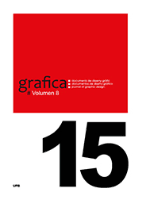
Grafica-Journal of Graphic Design
Illuminating the Future of Graphic DesignWelcome to the Grafica-Journal of Graphic Design, a premier publication dedicated to advancing the field of graphic design and visual arts. Published by UNIV AUTONOMA BARCELONA in Spain, this Open Access journal has been a vital resource for scholars and practitioners since 2013, making impactful research freely available to a global audience. The journal's scope encompasses a broad range of topics within graphic design, visual communication, and the overlapping domains of computer graphics, offering invaluable insights for researchers, educators, and industry professionals alike. With an impressive reputation reflected in its categorization, including Q1 in Visual Arts and Performing Arts and Q3 in Communication for 2023, Grafica stands out in terms of academic rigor and relevance. Currently indexed in Scopus, the journal holds significant rankings that underscore its impact within the Arts and Humanities as well as Social Sciences. By bridging artistic innovation and practical application, Grafica serves as an essential platform for the exchange of ideas, fostering creativity and collaboration within the vibrant community of graphic design.
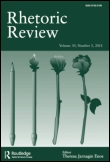
Rhetoric Review
Bridging Disciplines Through Language and RhetoricRhetoric Review, published by Routledge Journals, Taylor & Francis Ltd, serves as a vital platform for scholars in the fields of Rhetoric, Linguistics, and Literary Theory. Established in 1982, this esteemed journal presents a blend of theoretical frameworks and empirical studies that advance our understanding of rhetorical practices across diverse contexts. It holds a prestigious Q1 ranking in Literature and Literary Theory and a Q2 ranking in Linguistics and Language as of 2023, reflecting its influential role in shaping contemporary discourse in these disciplines. With an impressive Scopus rank of #85 out of 1106 in Literature and Literary Theory, Rhetoric Review is a go-to resource for researchers, professionals, and students aiming to explore the intricacies of language and communication. While the journal is not open access, it offers a comprehensive range of articles, reviews, and theoretical discussions that contribute significantly to both academic scholarship and practical applications in rhetoric. The journal’s commitment to publishing pioneering research ensures its relevance in an ever-evolving academic landscape.

Journal of Mathematics and the Arts
Connecting Creative Minds Through Mathematical InsightsThe Journal of Mathematics and the Arts, published by Taylor & Francis Ltd, is a unique interdisciplinary journal that explores the rich intersection of mathematics and artistic expressions, providing a platform for researchers, professionals, and students alike. With an ISSN of 1751-3472 and an E-ISSN of 1751-3480, this journal has been an important resource since its inception in 2007 and continues to expand its reach through 2024. The journal is particularly noteworthy for its Q1 ranking in Visual Arts and Performing Arts among the 2023 category quartiles, reflecting its impact in this creative area, although it holds a Q4 ranking in Computer Graphics and Computer-Aided Design and Mathematics (miscellaneous), showcasing its broader mathematical exploration. While it currently does not offer open access options, its rigorous peer-review process ensures the publication of high-quality research that contributes to the academic discourse on the aesthetic dimensions of mathematical concepts. With a focus on fostering collaboration between the arts and sciences, this journal stands as a vital hub for innovative thought and practice, making it essential reading for those invested in the evolving dialogue between these dynamic fields.

ANNALS ACADEMY OF MEDICINE SINGAPORE
Elevating healthcare discourse, one article at a time.ANNALS ACADEMY OF MEDICINE SINGAPORE is a reputable journal dedicated to the field of medicine, published by the Academy of Medicine, Singapore. With an E-ISSN of 2972-4066, this journal has been an influential platform since its inception in 1973, aiming to disseminate high-quality research and clinical findings pertinent to both local and international audiences. Currently ranked in the Q3 quartile in Medicine (miscellaneous), it holds a commendable 83rd percentile in Scopus rankings, indicating its significant academic contribution within the competitive landscape of medical literature. Although the journal operates on a traditional subscription-based model, it continues to provide access to critical insights that serve not only researchers but also healthcare professionals and students engaged in the ever-evolving medical sector. As it approaches its comprehensive publication mark in 2024, ANNALS will continue to focus on enhancing global healthcare discourse, making it an invaluable resource for those committed to advancing medical knowledge and practice.